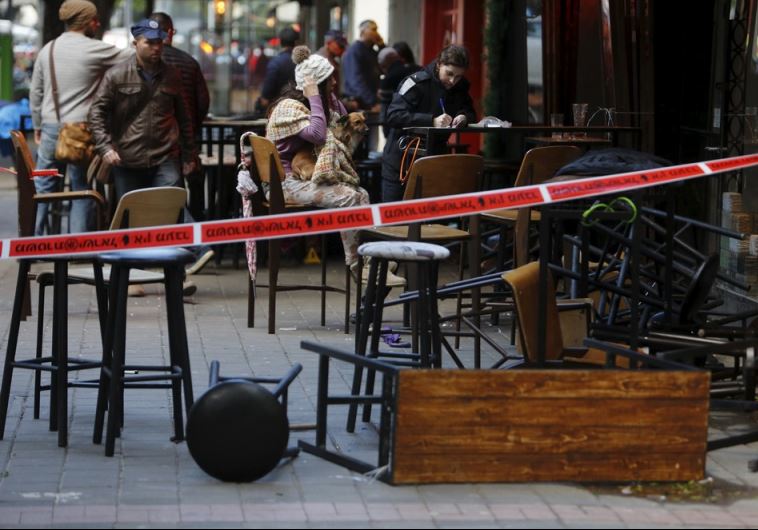Reporter's notebook: Scenes from the Tel Aviv terror attack
Confusion and the determination to carry on with life made for some unusual situations in the aftermath of Friday's attack.
 A woman sits with her dog after being questioned by police at the scene of a shooting incident in Tel AvivUpdated:
A woman sits with her dog after being questioned by police at the scene of a shooting incident in Tel AvivUpdated: